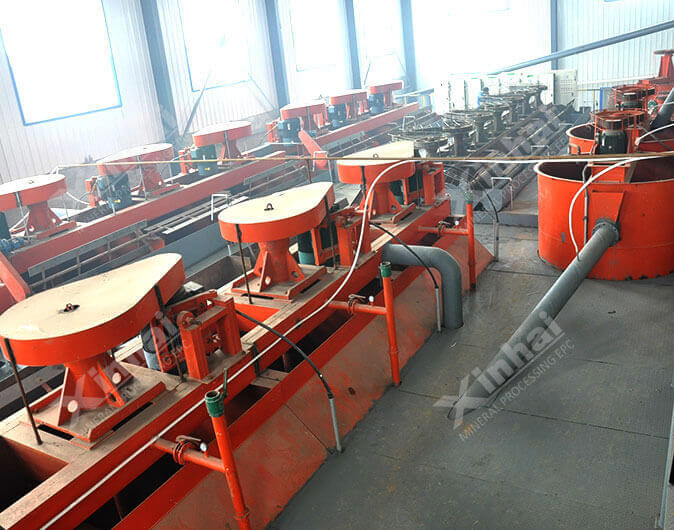cases



The original plant produced poor economic results due to inappropriate capacity, low raw ore grade and concentrate yield and high product costs. It adopted a two-stage open-circuit crushing process where small-scale crushing equipment was used and a one-stage closed-circuit grinding process comprising the ball mill and single spiral classifier. In the crushing stage, the product was coarse in size, which violated the principle of crushing more and grinding less. In the grinding stage, the grinding fineness was -200 mesh (92%), meaning that energy consumption was large and affected separation indices. The grade of final molybdenum concentrates was 39.58%. Compared with other similar projects, the concentrate grade was relatively low.
Crushing and screening: raw ore was fed by vibrating feeder to the jaw crusher for coarse crushing, then the product was transported by 1# belt conveyor to the fine ore bin; the size of the final crushed product is ≤150mm;
Grinding and classification: the two-stage grinding process was adopted; the autogenous mill was used in the first stage, where ground materials were classified by linear screen; oversize materials returned to the autogenous mill to form the first stage closed-circuit grinding; undersize materials were pumped by slurry pump to the cyclone for classification. Settling materials entered the grid ball mill to form the second-stage closed-circuit grinding. At the same time, cyclone overflow flowed by gravity to the flotation process. The final grinding fineness was -200 mesh (65%).
Flotation: the process of prioritized molybdenite flotation and separating tungsten from flotation tailings was adopted. Molybdenum roughing and scavenging adopted the flotation process of one-stage roughing, two-stage concentration, and two-stage scavenging; tailings flowed by gravity to the tungsten flotation process. Molybdenum concentration adopted the flotation process of seven-stage concentration; tailings returned to the previous process and concentrates entered the dewatering system. Tungsten flotation adopted the flotation process of two-stage roughing and four-stage scavenging; flotation tailings were pumped by slurry pump to the tailings pond; roughing concentrates were pumped by slurry pump to the deep-cone thickener and then treated under high temperature to remove reagent. Tungsten concentration adopted the process of five-stage concentration and two-stage scavenging; slurry after thickening and reagent removal returned to the tungsten concentration process; tungsten concentrates were sent to the dewatering system, and tailings returned to the scavenging Ⅲ process.
Concentrates dewatering: two-stage mechanical drying was adopted. Molybdenum flotation concentrates were pumped to the deep-cone thickener and then dehydrated in the automatic hydraulic chamber filter press; filtrate returned to the molybdenum concentration process, and the filter cake was transported to the fine material dryer (the water content of molybdenum concentrates was ≤4% after drying). Tungsten flotation concentrates were pumped to the deep-cone thickener and then dehydrated in the automatic hydraulic chamber filter press; filtrate returned to the tungsten concentration process, and the filter cake was stacked in the concentrates pond.
The project adopted sound, simple, and economical technological processes and efficient, energy-saving, and easily operated and maintained equipment. While ensuring the quality of plant construction, Xinhai worked to minimize costs and increase the efficiency of mineral resources. As a result, the grade and recovery of molybdenum flotation concentrates were 45% and 85% respectively, while those of tungsten flotation concentrates were both 65%.
To find out more about our products and solutions, please fill out the form below and one of our experts will get back to you shortly.